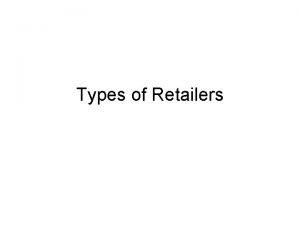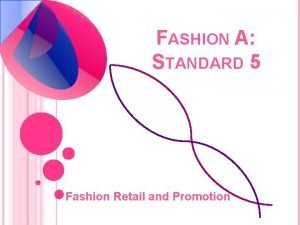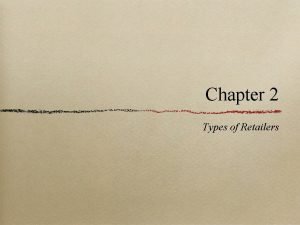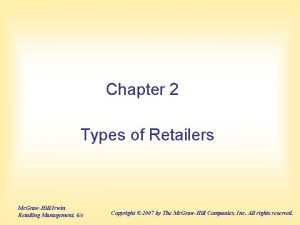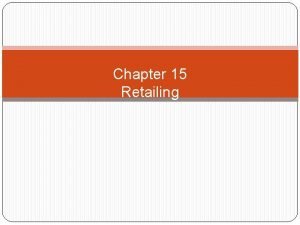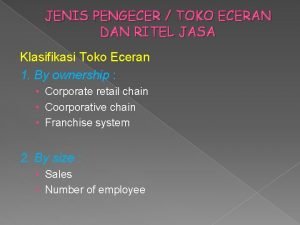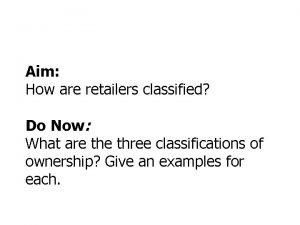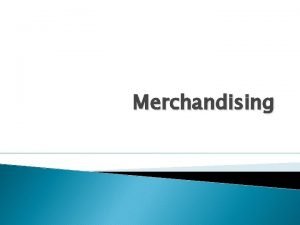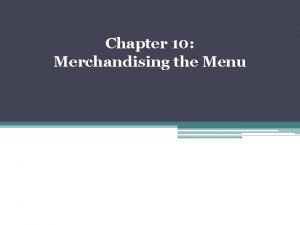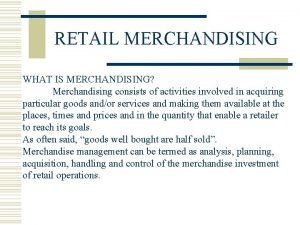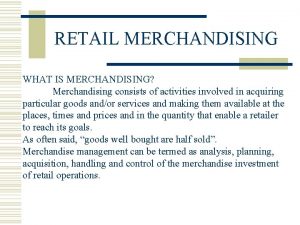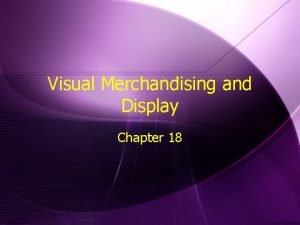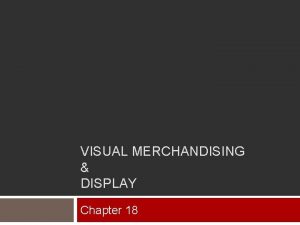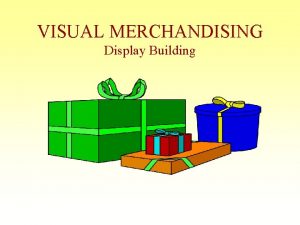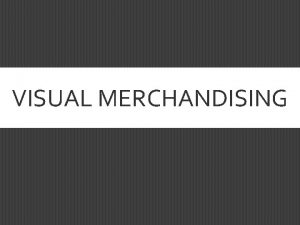VISUAL MERCHANDISING Where do retailers use visual merchandising











- Slides: 11

VISUAL MERCHANDISING

Where do retailers use visual merchandising? Four areas of display in a retail store ü Storefront ü Store Layout ü Store Interior ü Interior Displays

STORE INTERIOR • Fixtures: Store furnishings – Permanent and movable – Display cases – Counters – Shelving – Racks – Benches • Size, variety and quality affects clientele

INTERIOR DISPLAYS Purpose – Show merchandise – Provide product information – Reinforce print/other advertising

INTERIOR DISPLAYS Purpose • Promote store’s image • Usually promotional • May serve as part of selling space

Types of interior displays • Closed: see, not touch – Jewelry • Point-of-purchase: promote impulse buying – Tabloids, candy at • Open: encourages handling check-out – Clothes racks • Architectural: shows use of product – Room vignettes – Kitchen set-ups • Decorations: promote seasonal or holiday themes

Display Design Every display must have: • Balance – equal distribution of objects – Formal: identical on both sides (symmetrical) – Informal: not visually identical • Point of Emphasis – point of eye contact – Contrasting color – Contrasting shapes, size, textures – Highlighting with spotlight – Placement – something in foreground

• Harmony – pleasing effect of combinations • Proportion – (Scale) The relationship of the design elements to each other; pleasing effect on the eye – How do the elements relate? – Consider the side of the space in the window – Consider the size of objects to be used in the window

• Harmony – pleasing effect of combinations • Rhythm – line direction, eye movement – Pyramid/cylinder – Step or progression: progression of sizes or color (light to dark) – Zigzag: background, middle, foreground – Repetition: (xxx) multiples of the same shape or color – Alternation: (xoxo) when certain shapes or colors are used alternatively (light against dark colors, warm colors with cool) – Radiation: emphasis in middle; all radiates from center (sun)

AREAS OF WINDOW DISPLAY • Bow – most important part, seen the most; Used for main attraction, catch the eye • Center panel – runs ceiling to floor • Floor – used for tie-in items to help bring attention back to window • Back/side walls – hanging, accessories • Door wall – last chance for customer before entering store

Evaluating a Window Display Ralph Lauren Ø Theme: Seasonal Ø Balance: Asymmetrical Ø Emphasis: Contrast Ø Proportion: Proportional Ø Rhythm: Alternation Ø Harmony: Yes
 Types of retailing
Types of retailing Sampling method in research
Sampling method in research Retail environment analysis
Retail environment analysis Types of fashion promotion
Types of fashion promotion Example of variety and assortment
Example of variety and assortment What are types of retailers
What are types of retailers Characteristics of retailing
Characteristics of retailing Types of retailers
Types of retailers Vertical retail
Vertical retail Jenis-jenis pengecer
Jenis-jenis pengecer Classification of retailers
Classification of retailers Pricing techniques used by retailers
Pricing techniques used by retailers
